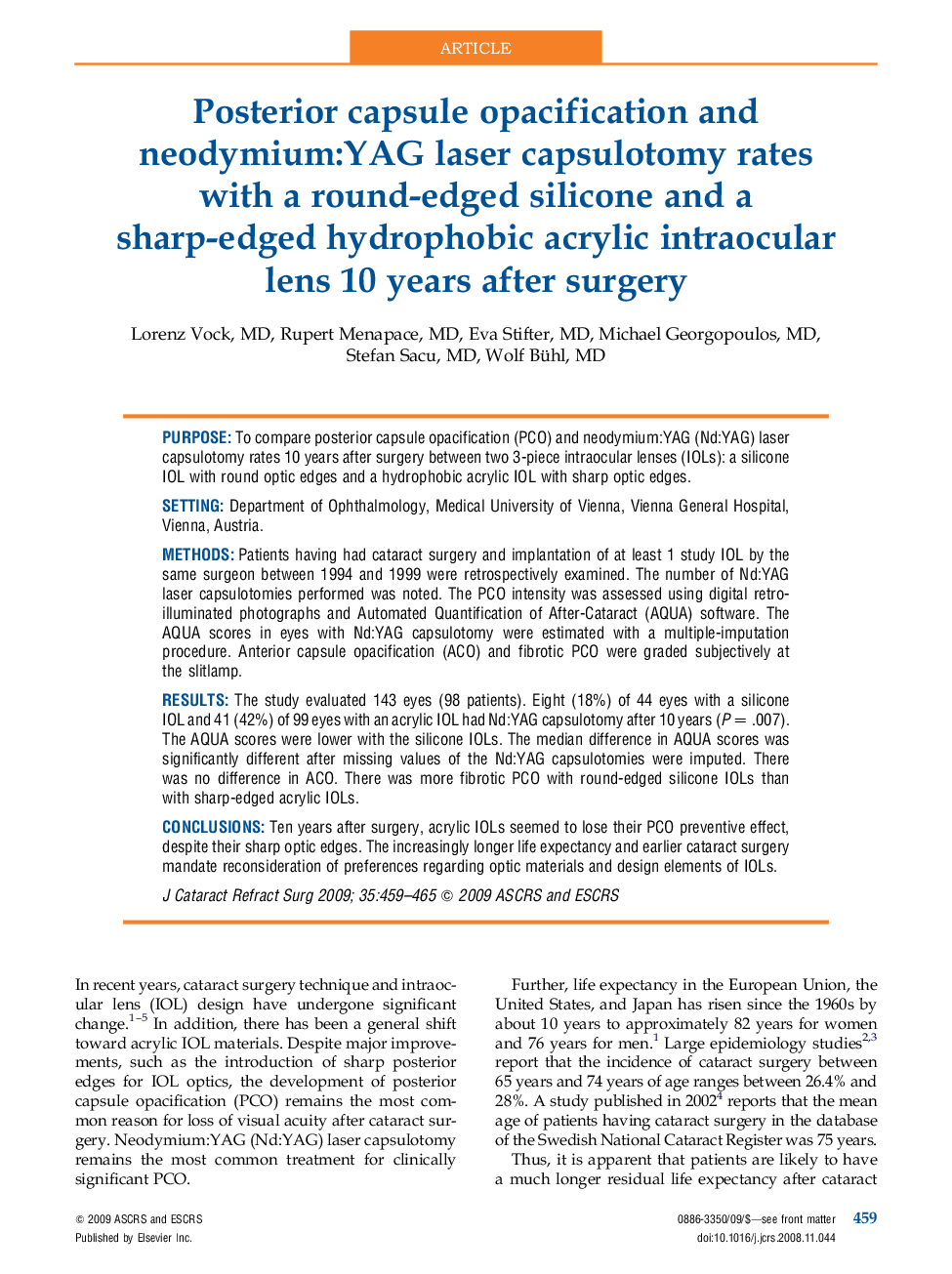| Article ID | Journal | Published Year | Pages | File Type |
|---|---|---|---|---|
| 4021780 | Journal of Cataract & Refractive Surgery | 2009 | 7 Pages |
PurposeTo compare posterior capsule opacification (PCO) and neodymium:YAG (Nd:YAG) laser capsulotomy rates 10 years after surgery between two 3-piece intraocular lenses (IOLs): a silicone IOL with round optic edges and a hydrophobic acrylic IOL with sharp optic edges.SettingDepartment of Ophthalmology, Medical University of Vienna, Vienna General Hospital, Vienna, Austria.MethodsPatients having had cataract surgery and implantation of at least 1 study IOL by the same surgeon between 1994 and 1999 were retrospectively examined. The number of Nd:YAG laser capsulotomies performed was noted. The PCO intensity was assessed using digital retroilluminated photographs and Automated Quantification of After-Cataract (AQUA) software. The AQUA scores in eyes with Nd:YAG capsulotomy were estimated with a multiple-imputation procedure. Anterior capsule opacification (ACO) and fibrotic PCO were graded subjectively at the slitlamp.ResultsThe study evaluated 143 eyes (98 patients). Eight (18%) of 44 eyes with a silicone IOL and 41 (42%) of 99 eyes with an acrylic IOL had Nd:YAG capsulotomy after 10 years (P = .007). The AQUA scores were lower with the silicone IOLs. The median difference in AQUA scores was significantly different after missing values of the Nd:YAG capsulotomies were imputed. There was no difference in ACO. There was more fibrotic PCO with round-edged silicone IOLs than with sharp-edged acrylic IOLs.ConclusionsTen years after surgery, acrylic IOLs seemed to lose their PCO preventive effect, despite their sharp optic edges. The increasingly longer life expectancy and earlier cataract surgery mandate reconsideration of preferences regarding optic materials and design elements of IOLs.
